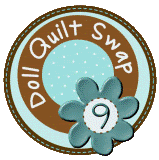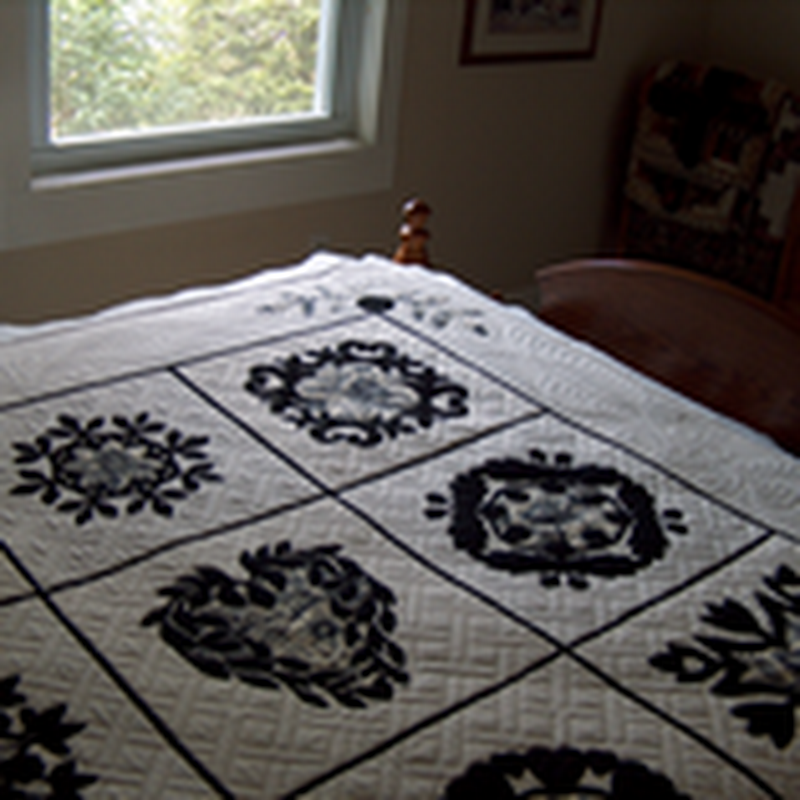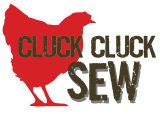Step 4C is simply basting over the pleats pinned and pressed earlier on the main panel. That'll hold 'em in place and get rid of the pins.
Next, Step 5 A-D. The handles. Watch out with the iron--it's so easy to burn fingers, especially if you give a little steam shot (ask me how I know). I folded the handle strips in half along the length, pressed and opened. Then fold each long side in towards the crease in the middle and press. It can be a bit tricky to hold and press, but you can use a stiletto to hold the folds down while ironing or pin (just don't run over the plastic pinheads). Press very well and then fold in half to enclose the raw edges and press, press, press.
The edge stitch along both long sides of each handle strip. I used an edgestitch foot (has that little metal guide on it) to help keep things lined up. Take your time, this stitching will show and you want it as straight and neat as possible--in the end though, don't fret if the line isn't exactly perfect. (Anyone looking that closely at your handbag is probably snooping in it--not looking at your stitches!)
Step 6 A-D is to pin and machine baste down the handles to the main panels. Keep the ends facing the correct way and you shouldn't have a problem keeping the handle from twisting. Me, I placed the handles so that the fold edge of the handle strips faced in towards the main panel pleats.
Next, attach the Top Panel with the interfacing to the Main Panels for the front. Take your time sewing over the handles and pleated parts. Going a bit slower will help you keep things neat and even when sewing across the various bumps and folds. (Step 7A)
Here's a closer look at the 1/2 inch seam allowance.
At this point, I like to first press the seam as is, without opening it up. Its a trick I learned in quilting called "setting the seam" and really helps to make the seams nice and crisp. Then open and press the seams towards the Main Panel.
You should now have front panels like this. The handles will naturally pop up towards the Top Panel once the seam has been pressed towards the Main Panel.
At this point, if you want to can skip Step 7B to sew the topstitching later when the fronts and backs are attached. I went ahead and followed the written instructions to topstitch 1/4 inch below the seam line on the Main Panel. Again, go slowly so you can keep it straight while crossing the thicknesses of the handles and the pleats.
At this point, I put the outside panels aside (skipping Step 8 for the moment) and went on to Step 9 to sew the non-interfaced Top Panels to the Lining Panels. These edges have a slight curve to them, just like ones on the outside panels--no worries, just pin and sew carefully--even a total beginner can handle this if they just take their time, it is a very gentle, subtle curve.

You may see what looks like extra fabric forming folds after it is sewn, this disappears when the seam is pressed towards the Lining Panel.
Here is what the interior linings should look like once pressed. See how nice and neat that little curve becomes once pressed.
Time to make the pockets! Step 10A is pretty simple. Just layer, right sides together, one interfaced Pocket Panel and one non-interfaced Pocket Panel. Sew with a 1/2 inch seam allowance along the top straight edge.
Then (Step 10B) flip the non-interfaced panel over so that both right sides are facing out. Press so that the bottom curved edges line up and the top seam edge is nice and even.
Finally, for Step 10C, machine baste around the curved edge to secure the panels together. Use a 1/4 inch seam allowance and if you start to get fabric build up as the foot moves, stop half way around and then baste from the other side towards the middle. This will help ease out this "extra" fabric and if there is a little bit still giving a slight pucker, it will be at the center bottom and not noticable.
Step 10D, sew the pockets to the lining. I noticed that you can slightly feel an "edge" created from the seam on the pocket panels. I preferred to put this side towards the lining panel just to make it less noticable.
Line up the bottom curved edges and baste one pocket panel to the right side of one of the lining panels. Repeat for the other one.
You'll be machine basting about 3/8 inch seam allowance so that the basting won't show in the final seaming. Here you can see how this basting seam is just inside the basting done earlier on the pockets.
At this point, I went back to Step 8 and pinned the two exterior panels (the ones with the handles) with right sides together. I'll sew them together later.
When I'm sewing, I like to group things together like doing all the pressing at once and then all the sewing. It helps everything to get done a bit quicker and less setting up and taking down of things like the ironing board. This is helpful if, like me, you don't have a dedicated sewing room where things can just be left out. Sometimes, there's no getting around going step by step, but whenever possible, try grouping your tasks and see if you don't get things done in a quicker more organized way!



















































These look so amazing!!!
ReplyDelete